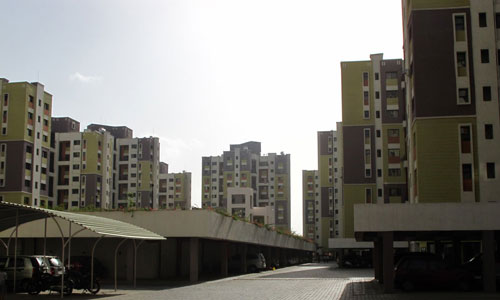
Cabinet to discuss bill to regulate realty today
Track2Realty-Agencies: The Union Cabinet on today, Oct 25, is likely to discuss the bill to regulate the real estate sector and also protect the interests of home buyers.

Track2Realty-Agencies: The Union Cabinet on today, Oct 25, is likely to discuss the bill to regulate the real estate sector and also protect the interests of home buyers.

Being blamed for being a haven for black money cartel, realty players broke their silence and instead tried to put the blame on the government for not introducing the desired reforms in the sector. However, they did not spell out if reforms are prerequisite to check the cartel of black money in the sector, why are they opposing the realty bill and a regulator.

Real estate developers have sought inclusion of “force majeure” provisions in the proposed real estate bill drafted by the Central Government.

Oberoi Realty said second-quarter profit rose 17 percent as sales growth beat analysts’ estimates.

Billionaire Sam Zell said he is entering the real estate markets in Colombia and India in the next two weeks as he continues to favor international investments over U.S. property deals.

Equity capital inflows touched USD 8.9 billion between January and September, registering a 46% Y-o-Y growth. The strong momentum in deal volume continued, with about 200 deals reported during this period, compared to 151 deals in the same period last year. The average deal size also increased to nearly USD 45 million in the first nine months of 2024 from about USD 36 million in 2023. Mid-sized deals, ranging between USD 10-50 million, represented 56% of the total investment inflows during this period.

Q3 2024 attracted USD 1.1 Bn inflows, 45% higher over Q3 2023. Office segment drove over half of the investments in Q3 2024, followed by residential with 33% share. Domestic investments accounted for 44% of the total investments during the quarter. Chennai & Mumbai cumulatively attracted 57% of the inflows in Q3 2024. Sustained confidence in Indian economy continued to drive institutional investments into the real estate sector, reaching USD 4.7 billion during the first three quarters of 2024, almost at par with the corresponding period in 2023. Following significant inflows in the first two quarters, Q3 2024 too registered healthy investment inflow of about USD 1.1 billion, reflecting a 45% YoY growth.

Mumbai recorded the highest potential SM REIT-ready completed office stock of ~75 mn. sq. ft. as of June’24, with around 10+ mn. sq. ft. of upcoming supply by 2026. Delhi-NCR recorded a completed SM REIT-ready potential stock of 70+ mn. sq. ft., followed by Bengaluru with 50+ mn. sq. ft. and Hyderabad with 30+ mn. sq. ft.. It is estimated that cumulatively, Delhi-NCR, Bengaluru and Hyderabad could add an additional supply of potential SM REIT-worthy stock of ~36 mn. sq. ft. by 2026. Other cities such as Pune, Kolkata, and Chennai recorded 25+ mn sq. ft. of completed supply as of June’24. It is estimated that Pune, Kolkata and Chennai would cumulatively record additional supply of potential SM REIT-worthy stock of ~14 mn. sq. ft. over the next two years.

In contrast, with USD 0.3 billion of investments in office assets, the segment witnessed subdued activity in Q2 2024. Although the annual decline was significant at 83%, the QoQ drop was relatively modest at 41%. The surge in industrial & warehousing, and residential investments resulted in a healthy investment volume of USD 3.5 billion for H1 2024 at an overall level, making up for the slow start in first quarter. Foreign investments remained robust, accounting for 81% of the total inflows in Q2 2024, predominantly led by investors from the US and UAE.

The median age of the country is likely to gradually increase from about 29 to 38 by 2050. Similarly, the proportion of aged people (above 60 years) is likely to increase from about 11% in 2024 to 21% in 2050. At the global level, over the next three decades (by 2050), of the 2.1 billion people above 60 years, India would account for a 17% share indicating a significant demand growth for senior care including housing in the country.
